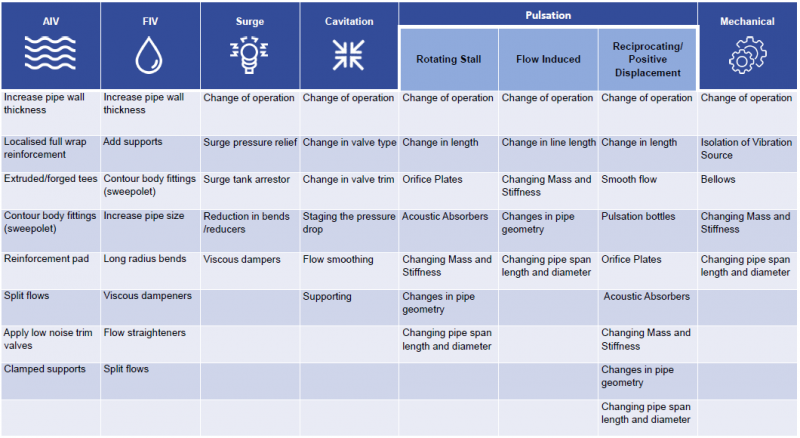Drilling down into piping fatigue: Acoustic and Flow Induced Vibration
(by Richard Palmer, Service Lead at WKC)
In industrial environments, failures of piping components can lead to unsafe operation, environmental damage, and a significant loss of revenue. Excessive piping vibrations are a major cause of machinery downtime, leaks, fatigue failures, high noise, fires, and explosions in refineries and petrochemical plants.
Factors contributing to failures include:
- Desire for increased flow rates:
- Average stream speeds today are double what they were in 1950, often in excess of 60 m/s.
- Increased use of “thin” walled piping, with the advent of higher strength materials (e.g. Duplex), and growing demand to reduce mass.
- Process engineering demands requiring faster load changes and hence faster valve actuation.
- Longer and longer piping being built (especially pipelines).
- Compact spaces, such as on offshore platforms.
Every object/substance, has a natural frequency at which it is “willing” to vibrate. When an external agent applies a forced vibration that matches this natural frequency the object begins to vibrate, this is known as resonance. It is the energy in the fluid that induces the vibrations. Choking of gases or flashing liquids are intense sources of vibration since there are large pressure losses downstream of the choke point. The Energy Institute Guidelines groups these various types of induced vibration into two key excitation mechanisms:
1. Flow Induced Excitation:
- Acoustic Excitation (AIV) – generated by relief valves, control valves or orifice plates.
- Flow Induced Turbulence (FIV) – turbulence of flowing liquid. Flow Induced Excitation:
- Surge or Momentum changes due to sudden valve closure.
- Cavitation/ flashing caused by vapour bubble collapse
- Pulsation – due to positive displacement or rotating stall
- Vortex Induced Vibration.
2. Mechanical Excitation – Rotating and reciprocating equipment like pumps, compressors.
At WKC we apply the methods outlined in the Energy Institute (EI) ‘Guidelines for the Avoidance Induced Fatigue Failure in Process Pipework’ (2008), to help our clients identify and mitigate induced vibration during the design phase of their Projects. Typically, vibration problem areas we are often faced with include:
- Piping spans (low natural frequencies).
- Piping connections (vent and drain, instrument lines, take-offs).
- Valves
- Piping and fittings associated (typically) with reciprocating pumps and compressors.
- Piping shell wall vibration (wall thickness).
Mitigation Options for different types of Induced Pipe Vibration


